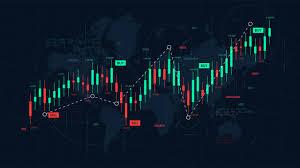Introduction
In the past decade, crypto trading has transformed from a niche activity into a global financial phenomenon. What was once reserved for tech enthusiasts and early adopters is now a mainstream investment avenue attracting millions worldwide. Whether you’re a curious beginner or an experienced trader looking to refine your strategies, understanding the fundamentals of crypto trading is essential for success.
What Is Crypto Trading?
At its core, crypto trading is the buying and selling of digital currencies such as Bitcoin, Ethereum, and thousands of altcoins available in the market. The goal is simple: purchase a cryptocurrency at a low price and sell it at a higher price to make a profit. However, the volatility of the crypto market makes this easier said than done.
Unlike traditional stock markets, cryptocurrency markets operate 24/7, allowing traders to engage at any time of the day. This flexibility is both an advantage and a challenge, as it demands constant market awareness and disciplined strategies.
Why Crypto Trading Has Gained Popularity
Several factors have contributed to the rise of crypto trading:
-
High Volatility – Price fluctuations in cryptocurrencies can be dramatic, offering traders opportunities for significant gains in short periods.
-
Decentralization – Many cryptocurrencies are not controlled by central banks or governments, appealing to those who value financial independence.
-
Global Accessibility – Anyone with an internet connection can participate, making it an inclusive investment space.
-
Innovation – New blockchain projects and tokens continuously enter the market, creating fresh trading opportunities.
-
Potential for High Returns – While risky, successful trades can deliver returns far exceeding traditional investment assets.
Types of Crypto Trading
There are several approaches to crypto trading, each with its own benefits and risks:
1. Day Trading
Day traders buy and sell cryptocurrencies within the same day, capitalizing on short-term price movements. This method requires constant monitoring of the market and quick decision-making.
2. Swing Trading
Swing traders hold assets for several days or weeks, aiming to profit from larger price swings. This strategy is less intense than day trading but still requires solid market analysis.
3. Scalping
Scalpers make dozens or even hundreds of trades per day, aiming to profit from tiny price changes. This high-frequency trading style demands advanced tools and lightning-fast execution.
4. HODLing
Derived from a misspelled word for “hold,” HODLing involves buying and holding cryptocurrencies for long periods, regardless of short-term market fluctuations. It’s more of an investment strategy than active trading.
5. Arbitrage
Arbitrage traders exploit price differences for the same cryptocurrency across different exchanges, buying low on one and selling high on another.
Understanding Market Analysis
Successful crypto trading depends heavily on market analysis, which comes in two main forms:
Technical Analysis (TA)
This involves studying price charts, patterns, and indicators such as Moving Averages (MA), Relative Strength Index (RSI), and Bollinger Bands. TA helps traders identify entry and exit points.
Fundamental Analysis (FA)
FA evaluates the intrinsic value of a cryptocurrency by examining project details, development teams, partnerships, and market demand.
A balanced combination of both TA and FA often yields the best trading results.
The Role of Exchanges in Crypto Trading
To start crypto trading, you’ll need to choose a reliable cryptocurrency exchange. Popular options include Binance, Coinbase, Kraken, and KuCoin. Key factors to consider when selecting an exchange are:
-
Security Measures – Look for features like two-factor authentication (2FA), cold storage, and insurance policies.
-
Trading Fees – Fees can vary significantly between platforms.
-
Liquidity – Higher liquidity ensures faster transactions at desired prices.
-
Available Pairs – Ensure the exchange supports the cryptocurrencies you wish to trade.
Risk Management in Crypto Trading
The volatile nature of the crypto market makes crypto trading platforms risk management crucial. Here are essential practices:
-
Only Invest What You Can Afford to Lose – Never put your essential savings into highly volatile assets.
-
Set Stop-Loss Orders – These automatically sell your asset if the price drops to a specific level, limiting potential losses.
-
Diversify Your Portfolio – Don’t put all your funds into a single cryptocurrency.
-
Avoid Emotional Trading – Stick to your strategy, and don’t make impulsive decisions based on fear or greed.
Tools and Resources for Crypto Traders
Modern traders have access to a wide range of tools that make crypto trading more efficient:
-
Charting Platforms – Tools like TradingView allow advanced technical analysis.
-
Portfolio Trackers – Apps like CoinStats and Delta help monitor your investments.
-
News Aggregators – Keeping up with crypto news is crucial for anticipating market movements.
-
Trading Bots – Automated systems can execute trades based on preset rules, removing emotional bias.
The Impact of Regulation on Crypto Trading
Regulations around cryptocurrency vary globally. Some countries fully embrace digital currencies, while others impose strict restrictions. Understanding your region’s laws is essential to ensure compliance and avoid legal issues.
For instance:
-
In the U.S., crypto trading is legal but subject to taxation.
-
In Japan, cryptocurrencies are recognized as legal property.
-
In China, most forms of crypto trading are banned.
Common Mistakes to Avoid in Crypto Trading
Many beginners fall into traps that can lead to significant losses:
-
Overtrading – Making too many trades without a solid strategy can quickly drain your funds.
-
Chasing Hype – Buying into a cryptocurrency solely because it’s trending can be risky.
-
Ignoring Fees – Frequent small trades can add up in fees, eating into profits.
-
Neglecting Security – Failing to store assets securely can lead to hacks or theft.
The Future of Crypto Trading
As blockchain technology evolves, so does the crypto trading landscape. Emerging trends include:
-
Decentralized Exchanges (DEXs) – Platforms like Uniswap and PancakeSwap allow peer-to-peer trading without intermediaries.
-
NFT Integration – Non-Fungible Tokens are becoming part of the broader crypto ecosystem, offering new trading opportunities.
-
AI-Powered Trading – Artificial intelligence is increasingly used to predict market trends and automate strategies.
-
Tokenization of Assets – Real-world assets such as real estate and art are being tokenized, opening new markets for traders.
Final Thoughts
Crypto trading offers immense opportunities but comes with equally significant risks. Whether you’re trading to make quick profits or investing for the long term, success depends on knowledge, discipline, and the right tools. By understanding market analysis, risk management, and the latest industry trends, you can navigate the crypto market with confidence.
The world of crypto moves fast, and those who stay informed and adaptable will have the best chances of thriving in this exciting financial frontier.
See more our website : visit here




